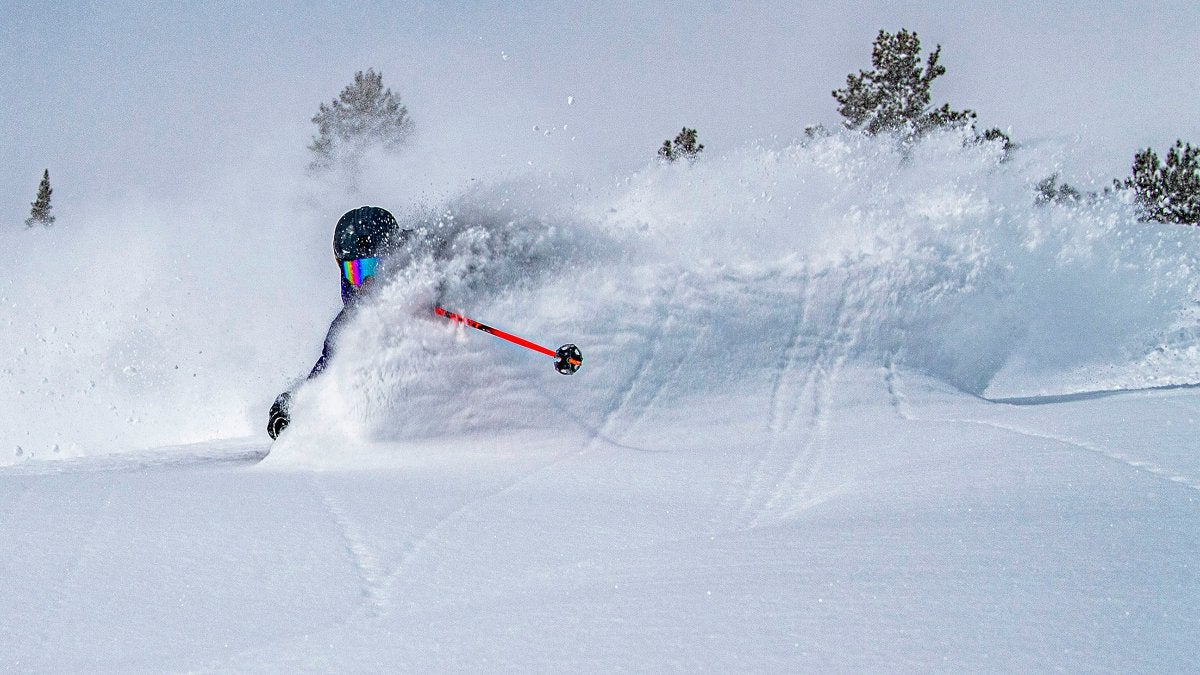No products in the cart.
Outdoor Adventure
An Ode to the Perfect Pow Shot
Every powder shot is unique. It takes a series of events beyond human choreography to capture a great one. Back in January, Alta was suffering one of its worst starts to the ski season in memory. Then, like paddles to the chest of a dying man, a three-day storm cycle in mid-February blanketed the canyon in 100 inches of snow. Subsequent storms kept refreshing things in the weeks that followed. Despite good marketing, Alta doesn’t always get the lightest snow in the world, but it gets 15-to-20-inch storms so frequently that it makes for some of the most consistent steep powder skiing on earth.
Lee Cohen, an outdoor photographer who has been shooting in Utah since the early 1980s, says that in the uppermost reaches of the Wasatch it’s pretty common to get 25 to 30 grade A powder days a year. With photography, such frequency matters—it gives you better odds of being in the right place at the right time. Of those 25 to 30 days of quality powder skiing, Lee says, conditions set up for great photography only about a third of the time. He shot this photo of his pro skier son, Sam, on one of those rarified days.
Seventeen inches fell overnight. And then the sky went wispy blue with temps in the teens—ideal circumstances for both powder skiing and photography. The storm also came in right side up, which means that it began warm, letting denser snow adhere to the subsurface with ever more complex and airy stellar dendrites layering above. (The opposite snow—light with heavy on top—is called upside down and isn’t as fun to ski.) That new base is what Sam’s skis are reacting with beneath the surface. Such snowpacks are alive, returning energy to the skier. Those forces are apparent in the shot. The energy of the snow and the skier is lifting that wall. The surface snow also has a creamy element to it, which lets it bond loosely and then rise up cohesively. It isn’t true blower powder, but that doesn’t matter.
To that snow, you add a skier. To me, the best powder shots have some context to them. The anonymous arm and pole in profile reaching out of a cloud is to be used sparingly. I want to see an identifiable human form. This matters because skiers live vicariously through such images. They imagine themselves in the scene. As such, the pole plant needs to be correct. The shoulders must be square to the fall line. The elbows can’t be chicken winging. The head needs to be up—check out the rainbowing oil slick in the goggles above. Here, Sam is using the timing of his left pole plant to set up his next right-footer. It’s actual skiing being captured, as opposed to one big photo-ready turn. We know this because there’s a second contrailing powder cloud behind Sam, a wraith of the turn he just finished. Sam is an accomplished big-mountain skier, as comfortable on Alaskan spines as he is at his home hill. Athletes of such caliber lend themselves to better photos. “Power and speed are vital, but form is the most important thing,” Lee says.
Looking at the image is by no means a substitute for being there, but for someone (me) who hasn’t skied a powder day all year, thanks to injury and drought, it helps the psyche to merely see such moments. Compositionally, the rollerball tracks draw the eye to the subject, but from my desk chair, the tracks tether me to a powder day I wish I’d enjoyed. To me, what makes this image so captivating is that the elevated tracks represent the briefest moment in time. In the very next frame, which was captured 1/12th of a second later, they’re imploding and exploding in celestial chaos. But for one perfect slice of time, a powder field rises, held by some unseen force like the surface tension that contains the oceans.
Source link

